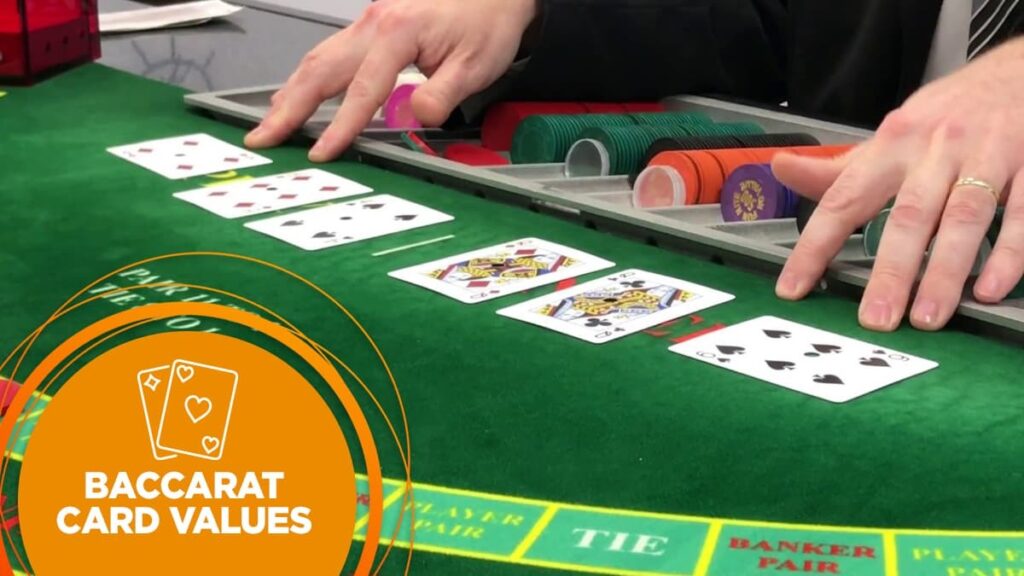Introduction to Baccarat Banque
Baccarat Banque stands as one of the three primary variants of the game cherished by casino enthusiasts, particularly in European casinos. Renowned for its allure, one key factor contributing to its popularity is the casino’s perpetual role as the banker. In land-based casinos, the game unfolds on a specialized arrangement of conjoined tables, accommodating a sizeable group of 10 to 16 players. Due to this setup, it’s often referred to as Baccarat à Deux Tableaux or Baccarat on Two Tables.
Understanding Baccarat Banque Gameplay
In Baccarat Banque, three decks of cards are employed, differing from the six or eight used in Punto Banco and Chemin de Fer. While the rules bear resemblance to Chemin de Fer, a pivotal distinction lies in the role of the Banker. Unlike Chemin de Fer, where the Banker changes upon loss, in Baccarat Banque, the player with the largest wager assumes the role until the shoe concludes or their funds deplete. The highest bettor acts as the Banker and occupies a pesowin position opposite the dealer, initiating the round once all players are seated.
Initially, the dealer shuffles the cards, followed by players on either side of the dealer. Lastly, the Banker shuffles, albeit symbolically, as the casino invariably holds the bank. Subsequently, the Banker selects a player to cut the cards with a cut card. Dealing commences with a card to the Player positions on both tables, then a card to the Banker. Players can wager solely on Player positions, while the Banker exclusively bets on the Banker position. Players may bet on both Player positions, omitting the Tie bet. The highest bettor on each side governs the respective hand.
A second card is dealt to each hand position, following the order of initial dealing. Subsequently, players and the Banker assess hands for naturals (totaling 9 or 8), with a natural 9 prevailing over 8. Absent a natural, players and the Banker decide whether to draw an additional card. Following player decisions, the Banker acts based on Player cards. Hands are then compared, with payouts disbursed for winning hands. Should the Banker position triumph, the incumbent remains until defeated, at which point the role shifts. Winning Player bets yield even money, while successful Banker bets incur a 5% commission for the casino.
Card Values and Drawing Rules
Baccarat Banque adheres to standard Baccarat card values, with number cards reflecting their face values and picture cards valuing 10. Hands totaling 10 or more subtract 10, ensuring values within a range of 0-9. Drawing rules dictate players typically draw a third card for hands totaling 0 to 4, standing on 6 or 7. For hands totaling 5, the decision pesowin lies with the player. The Banker, in turn, considers player hands, typically focusing on the higher bet.
Strategies for Baccarat Banque
While luck remains paramount in Baccarat Banque, a rudimentary strategy exists, albeit with marginal impact on odds. Players are advised to hit on totals of 0 to 4, standing on 6 or 7. As Banker, hitting on 0 to 5 and standing on 7 is recommended. Notably, four specific scenarios influence player action, such as when the Player holds a total of 5.
Tips for Enjoying Baccarat Banque
Despite limited influence over outcomes, several tips enhance the enjoyment of Baccarat Banque. Emphasizing prudent bankroll management is paramount, ensuring sustainable betting to withstand potential losing streaks. Moreover, moderation in response to winning streaks prevents reckless betting and potential losses. Advocates often suggest assuming the Banker position, benefiting from its marginally superior winning odds over time, despite the 5% commission. Ultimately, with responsible betting, Baccarat Banque promises exhilarating gameplay pesowin and the prospect of substantial winnings, elevating the thrill of the casino experience.




